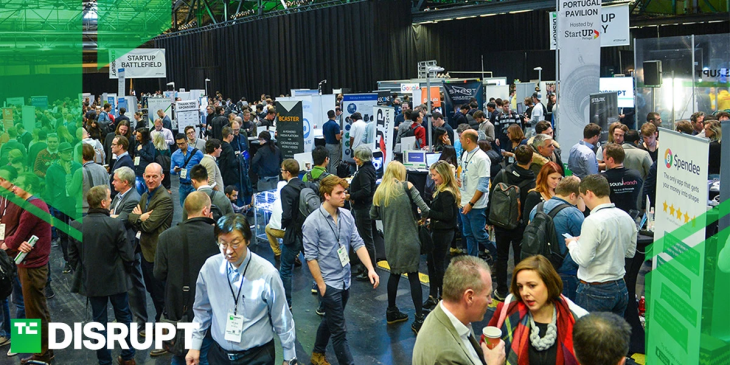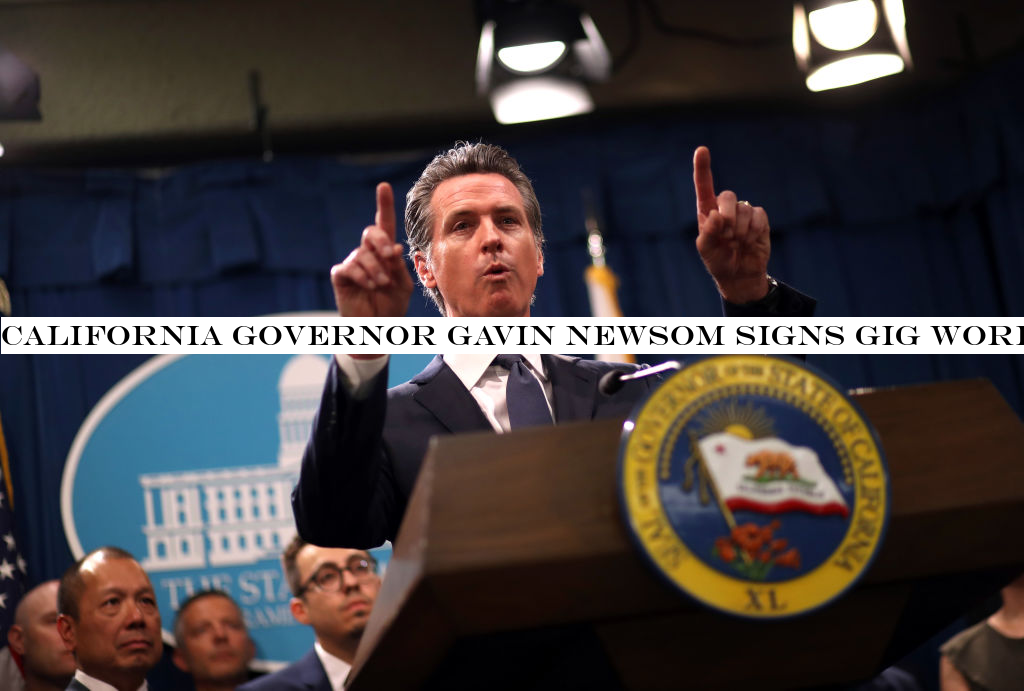Music
Trailers
DailyVideos
India
Pakistan
Afghanistan
Bangladesh
Srilanka
Nepal
Thailand
StockMarket
Business
Technology
Startup
Trending Videos
Coupons
Football
Search
Download App in Playstore
Download App
Best Collections
Technology

Itgetting down to the wire for your opportunity to show off your early-stage startup inStartup Alley at TechCrunch Disrupt SF this October 2-4.Theresimply no better way to place your ideas and technology in front of influential change agents that can help you propel your business forward and set the stage for future success. Here are just four of the many reasons you should exhibit in Startup Alley.
1. Awesome exposure to the media
Along with 10,000+ attendees, Disrupt SF will have more than 400 members of the media. We&re talking the big guns — CNBC, Bloomberg, Forbes, Financial Times — alongside TechCrunch writers, scouring the floor looking forstories about fascinating founders, emerging tech trends or maybe even a future unicorn. Scoring media coverage can work wonders for your bottom line — as Luke Heron, CEO of TestCard, learned when he exhibited in Startup Alley:
We got a fantastic writeup in Engadget, which was really valuable. Cash at the beginning of the start-up journey is difficult to come by, and an article from a credible organization can help push things in the right direction.
Last year, TestCard closed a $1.7 million funding round.
2. Beaucoup investor attention
Journalists aren&t the only influencers perusing the tech and talent on display in Startup Alley. Investors are just as eager to find up-and-coming prospects to add to their portfolios. Itthe perfect place to start conversations and develop relationships that lead to big changes. And we&ve got a plethora of investors (both traditional VCs and corporate folk) in the Valley: Sequoia, Verizon Ventures, GV, SoftBank, Naspers, AT-T, Honda Innovations and more. Herewhat David Hall, co-founder of Park - Diamond, had to say about his experience:
Exhibiting in Startup Alley was a game-changer. The chance to have discussions and potentially form relationships with investors was invaluable. It completely changed our trajectory and made it easier to raise funds and jump to the next stage.
Last year, Park - Diamond closed its first round of funding, allowing the company to relocate to New York and make its first key hires.
3. Wild Card shot at the Startup Battlefield competition
Missed out on the Startup Battlefield applications? All exhibitors in Startup Alley get a chance to win one of TWOWild Card entries to the Startup Battlefield pitch competition. TechCrunch editors will select two standout startups as Wild Card teams that will go on the Main Stage to compete head-to-head in Startup Battlefield for $100,000 equity-free cash, the Disrupt Cup and even more glorious investor and media attention.
4. Free hotel stay for Startup Alley companies who book now
With all of those reasons, ithard to top all the value you&ll get from a Startup Alley Exhibitor Package, but we&ll even sweeten the deal and throw in a complimentary 3-night stay at a SF hotel if you book by Wednesday, September 25. All of this opportunity for $1,995 sounds like ittoo good to be true, but if you act now, this can become your reality.
There you have it. What are you waiting for?Buy your Startup Alley Exhibitor Package and strut your stuff at Disrupt San Francisco 2019.
- Details
- Category: Technology
Read more: Get your Startup Alley Exhibitor package plus bonus hotel stay
Write comment (99 Comments)Brands are often left to act like the person who searches for their keys under the streetlight simply because that is where the light is better. However, when brand marketers focus only on engaging with the customers they can more easily see — where online activity is visible — they risk overlooking the valuable opportunities hiding in darker spaces.
One of the most valuable of those dark web spaces is in the realm of what we call µbrowsers& — the messaging apps like Slack, WhatsApp and WeChat. We call them microbrowsers because they display miniature previews of web pages inside private message discussions. These previews, also known as ‘unfurled links&, create your brandfirst impression and play a big role in whether or not the person on the receiving end will click through to buy, or read or engage.
Google Analytics lumps all microbrowser-generated web traffic into the ‘Direct& bucket, which we often just ignore. This means we look for customers where we know how to create campaigns easily — on Facebook, Twitter and Instagram, and buying Google Ad Words.
And as more people rely more heavily on messaging apps for primary communication, these link previews from microbrowsers are becoming the leading segment of your direct traffic visitors. In Cloudinary2019 State of Visual Media Report, which drew on data from more than 700 customers and 200 billion transactions, we found that 77% of link sharing in Slack occurs during working hours and that the vast majority of the click-throughs are reported as ‘direct& traffic. The rise of microbrowsers gives us an opportunity to engage and attract customers through word of mouth discussions.
The good news is that the ‘leads& that microbrowsers send to your brand site are usually highly qualified and close to the bottom of the traditional sales pipeline funnel. When consumers arrive on your site they are often ready and eager to buy (or read, view and listen to your content).
Whether it be for sneakers, tickets to a concert, a birthday gift idea, or an article to read — a trusted peer recommendation typically happens in that fleeting moment when the appetite to buy is right now. That isn&t just valuable, itthe holy freaking grail!
Top tips for creating links that engage

Image via Getty Images / drogatnev
The way to get the most value from microbrowser traffic is by helping along this peer influencing that happens in the dark. By creating compelling, informative links with images, video and text information specifically for microbrowsers, you increase the likelihood that peer-to-peer recommendations in groups convert into sales and reads.
What follows are some top tips to ensure that the links unfurling within microbrowsers have the greatest impact.
First, remember the golden rule: your audience is human. When creating content for microbrowsers, design it for humans, not machines.
- Details
- Category: Technology
Read more: How to profit from valuable peer referrals hiding in Slack
Write comment (91 Comments)There are apps out there that help you find friends, find dates and find your distant family histories, but when it comes to &growing your professional network,& the options are shockingly bad, we&re talking LinkedIn here.
Lunchclub is a startup thatlooking to help users navigate finding new connections inside specific industries. The company has recently closed a $4 million seed round led by Andreessen Horowitz with other investments coming in from Quoraco-founder, the Robinhood cofounders, and Flexportcofounders.
The app follows in the footsteps of others that aimed to be dating app-like marketplaces for growing out your professional network via 1:1 lunch and coffee meetings. Lunchclub is more focused on setting up a handful of meetings for users that have a specific goal in mind. Lunchclub is aiming to be your warm intro and connect you with other users via email that can assist you in your professional goals.
When you&re on-boarded to the service, you are asked to highlight some &objectives& that you might have and this is where the app really makes its goals clear. Options include, &raise funding,& &find a co-founder or parter,& &explore other companies,& and &brainstorm with peers.& These objectives are pretty explicit and complementary, i.e. for every &raise funding& objective, therean &invest& option.
There isn&t a ton being asked for on the part of the user when it comes to building up the data on their profile, Lunchclub is hoping to get most of the data that they need from the rest of the web.
&Our view is that theretons of data already out there,& Lunchclub CEO Vlad Novakovski told TechCrunch in an interview. &Anything that comes from the existing social networks, be in things like Twitter, be it things that are more specific to what people might be working on, like Github or Dribble or AngelList — all of those data sources are in the public domain and are fair game.&
Lunchclubsell is that they can learn from what matches are successful via user feedback and use that to hone further matches. Novakovski most previously was the CTO of Euclid Analytics which WeWork acquired in 2017. Previous to that, he led the machine learning team at Quora.
The web app, which currently has a lengthy-waitlist, is available for users in seven cities including the SF Bay Area, Los Angeles, New York, Boston, Austin, Seattle and London.

Co-founders Vlad Novakovski, Scott Wu and Hayley Leibson
- Details
- Category: Technology
Read more: Lunchclub raises $4M from a16z for its AI warm intro service
Write comment (100 Comments)
California Governor Gavin Newsom has signed into law gig worker protections bill AB-5. This comes shortly after AB-5 passed in the California State Assembly and Senate.
&Today, we are disrupting the status quo and taking a bold step forward to rebuild our middle class and reshape the future of workers as we know it,& bill author and Assemblyperson Lorena Gonzalez said in a statement. &As one of the strongest economies in the world, California is now setting the global standard for worker protections for other states and countries to follow.&
AB-5 will help to ensure gig economy workers are entitled to minimum wage, workers& compensation and other benefits by requiring employers to apply the ABC test. The bill, first introduced in December 2018, aims to codify the ruling established in Dynamex Operations West, Inc. v Superior Court of Los Angeles. In that case, the court applied the ABC test and decided Dynamex wrongfully classified its workers as independent contractors.
According to theABC test, in order for a hiring entity to legally classify a worker as an independent contractor, it must prove the worker is free from the control and direction of the hiring entity, performs work outside the scope of the entitybusiness and is regularly engaged in work of some independently established trade or other similar business.
&We agree with Gov. Newsom that California still has an opportunity to support the overwhelming majority of rideshare drivers who want a thoughtful solution that balances flexibility with earnings guarantees and protections,& Lyft spokesperson Adrian Durbin said in a statement to TechCrunch. &We are confident that with his leadership we can reach a historic agreement, but if necessary we are prepared to take this issue to the voters to preserve the freedom and access drivers and passengers want.&
Last week, Uber made it clear it plans to do whatever it takes to keep its drivers independent contractors.
&We will continue to advocate for a compromise agreement,& Uber Chief Legal Officer Tony West said on a press call last week.
As Uber outlined last month, the company is pushing for a framework that would establish a guaranteed earnings minimum while on a trip, offer portable benefits and enable drivers to &have a collective voice.&
He went on to say that Uber is continuing to explore several legal and political options to lay the groundwork for a statewide ballot initiative in 2020. Uber and Lyft announced a$60 million joint initiative last month, and now West is saying Uber is open to investing even more money in that committee account.
&This is not our first choice,& West said. &At the same time, we need to make sure we are exploring all options and all alternatives to put forward a framework that works for the 21st-century economy, and we believe we have a framework that does that.&
Despite opposition from Uber and other gig economy companies, the law will go into effect January 1, 2020.
- Details
- Category: Technology
Read more: California Governor Gavin Newsom signs gig worker bill AB-5 into law
Write comment (99 Comments)
For new brands, growing awareness and gaining the trust and credibility of consumers are two of the most important yet challenging marketing objectives. As an added constraint, most startups don&t have the budgetary flexibility to activate mega-influencers and celebrities that have national attention at their fingertips. However, new research from ACTIVATE found that smaller-tier, more accessible influencers are a top choice for marketers & they enable brands to tap into niche communities and offer superior engagement rates.
Surveying over 110 brand marketers, PR professionals, social media managers and agency executives, we found that 64 percent of marketers are choosing to utilize micro-influencers very often, as opposed to larger creators, mega influencers and celebrities. We also found that more than 44 percent of marketers are repurposing influencer-created content following a sponsorship, a practice that extends the ROI of an influencer campaign and can help startups attain valuable visual assets for future marketing use.
While mega-influencer content rights are often negotiated to steep rates, those of smaller tier influencers are more affordable, as the influencers themselves also benefit from the added exposure.
With this in mind, when developing an influencer campaign, itcritical not to feel constrained to the most popular creators, and instead think out of the box and consider what factors will be most important to the audience you&re specifically trying to reach. When being thoughtful about how you&re implementing influencers, smaller creators can be just as impactful as their larger counterparts.
Letgo through some of the most impactful emerging influencer strategies, to grow awareness, without growing debt.
Key influencer casting strategies to drive targeted impact
- Details
- Category: Technology
Read more: Out of the box influencer strategies to accelerate awareness for your startup
Write comment (91 Comments)The Daily Crunch is TechCrunchroundup of our biggest and most important stories. If you&d like to get this delivered to your inbox every day at around 9am Pacific, you can subscribe here.
1. Facebook launches Portal TV, a $149 video chat set-top box
The Portal TV lets you hang out with friends using your homebiggest screen. Itpart of a new line of Portal devices that bring the platformauto-zooming AI camera, in-house voice assistant speaker, Messenger video chat and end-to-end encrypted WhatsApp video calls to smaller form factors.
Facebook says it also will provide a lot more clarity around privacy — although human review of voice recordings is still turned on by default.
2. Apple Watch Series 5 review
The Apple Watch Series 5 doesn&t include any hardware additions quite as flashy as the LTE functionality and ECG monitor it introduced with previous updates. But taken as a whole, the new features maintain the devicespot at the top of the smartwatch heap.
3. Google Fi gets an unlimited plan
For the longest time, Google Fi didn&t play the unlimited calls, text and data game. Thatchanging this week.

4. Roboticist and YouTube star Simone Giertz is coming to Disrupt SF
With 1.92 million YouTube subscribers, Giertz is best known for her &shitty& robotic creations, including arms that serve soup and breakfast, draw holiday cards and apply lipstick — to hilariously uneven results.
5. Documents reveal how Russia taps phone companies for surveillance
Documents reviewed by TechCrunch offer new insight into the scope and scale of the Russian surveillance system known as SORM, and how Russian authorities gain access to the calls, messages and data of customers of the countrylargest phone provider.
6. Podcast app Pocket Casts is now available for free, with an optional $0.99 subscription
Previously, you had to pay a one-time fee of $3.99 to access the Android or iOS apps, but CEO Owen Grover said this approach seemed increasingly at odds with Pocket Casts& goals, and with the vision of the public radio organizations that acquired it last year.
7. In a social media world, herewhat you need to know about UGC and privacy
For a brand, is it worth the effort to incorporate UGC into their marketing strategy? And if so, how can they do it within the rules — and more importantly, in adherence with the expectations of consumers? (Extra Crunch membership required.)

- Details
- Category: Technology
Read more: Daily Crunch: Facebook announces Portal TV
Write comment (90 Comments)Page 856 of 5614

 11
11





